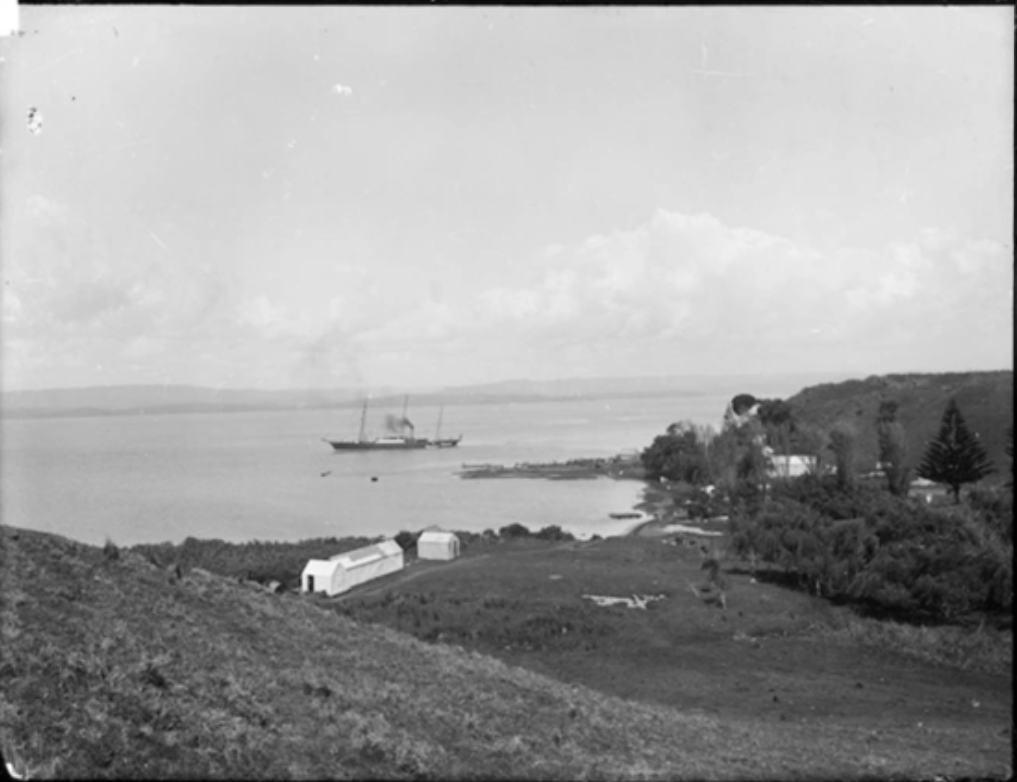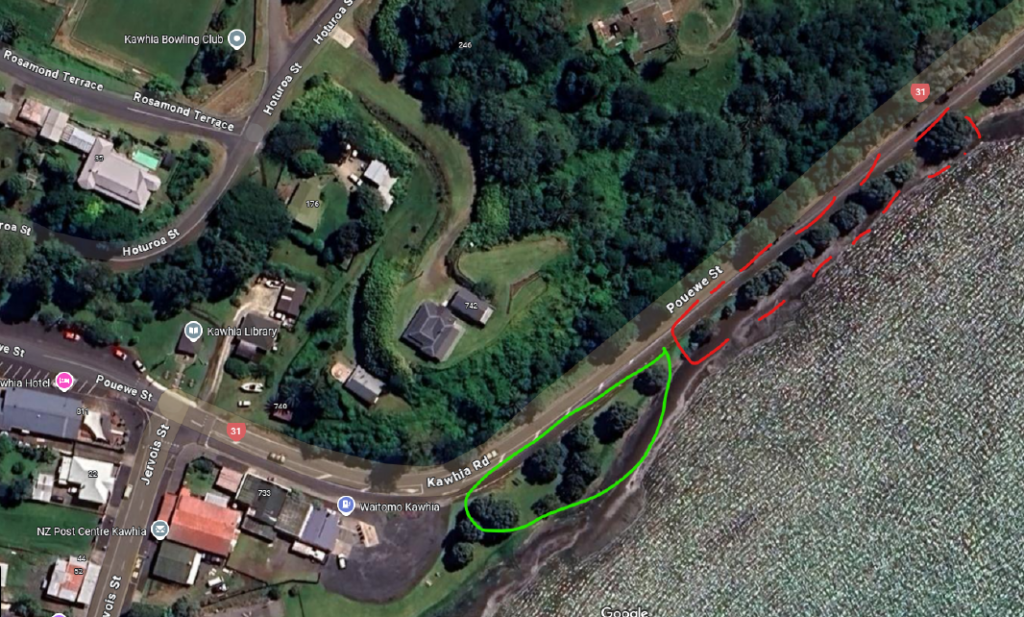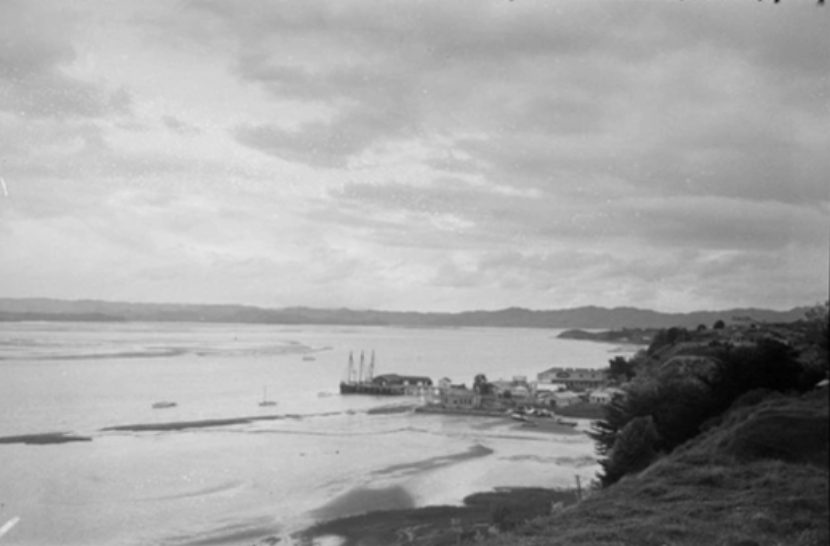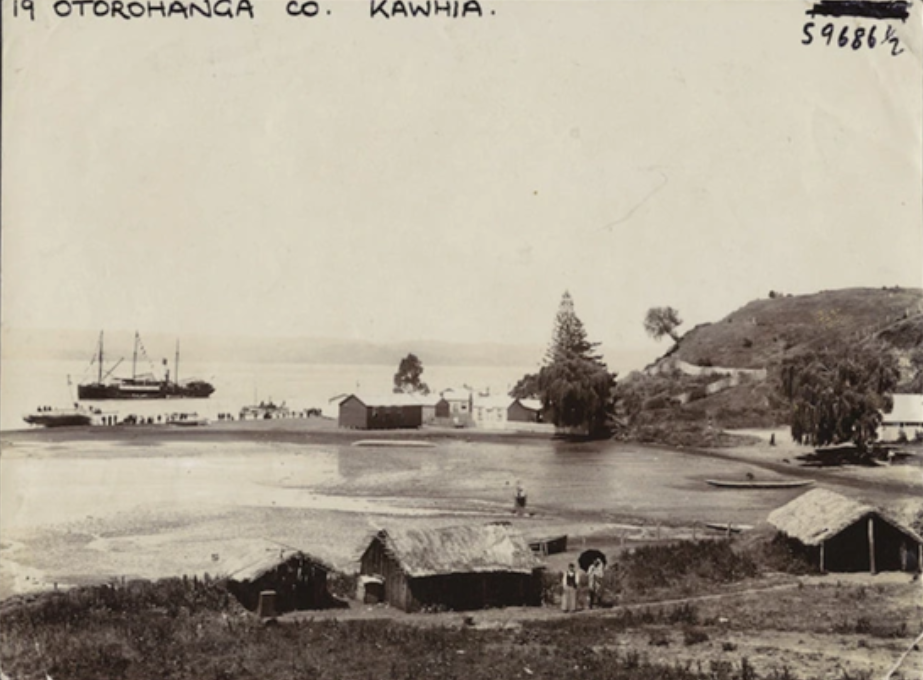Tēnā koutou e te iwi
You may have seen recent media coverage about the proposed removal of pōhutukawa trees on the waterfront at the entrance to Kāwhia Township.
We want to provide an update and some background on this situation to help clarify our position as Ngāti Hikairo.
Background and Council Consultation
The pōhutukawa trees in question were planted around 2005–2006 as part of a local beautification project. At that time, there was little to no consultation with Ngāti Hikairo regarding the planting. The area they were placed in—known as Taihoa, and further along, Waimurumaho—is a traditional taunga waka (waka landing site).
The name Taihoa refers to the practice of launching and temporarily mooring waka there. Historical photos of the area show no trees present, which makes sense as trees would have obstructed waka movements
Image: Taihoa c.1884 — A traditional waka landing area with no trees along the foreshore

The Ōtorohanga District Council recently undertook consultation with the community and iwi. Despite objections from some in the community, the Kāwhia Community Board has confirmed the trees will be removed.
Ngāti Hikairo’s Position
After careful consideration, Te Rūnanganui o Ngāti Hikairo determined that we should support the removal of these trees for the following reasons:
- The trees are damaging the footpath and road; this will worsen over time and become more costly to repair.
- The trees may contribute to erosion, threatening both the road and the moana.
- These are not seedlings from our tūpuna rākau (Tangitekorowhiti or Te Papa o Karewa), but saplings brought into Kāwhia.
- The site is a traditional taunga waka and historically did not contain trees.
- If erosion forces the road to be moved, Māori whenua may be taken for new access into the town.
- In agreement with the Council, removed timber will be offered for whakairo (carving).
Image: Satellite image showing pōhutukawa trees to be removed in red, and remaining trees in green.

History of the Area
The whenua where the trees are located – Taihoa and Waimurumaho – is rich with Ngāti Hikairo history. These were significant waka landing areas and were intentionally kept clear. The planting in 2005–06 did not reflect this historical use or involve appropriate consultation.
Image: Waimurumaho c.1910s — Coastline was traditionally clear to allow waka access.

Image: Kāwhia Harbour from hillside – Tree-free foreshore demonstrates historic waka activity zones.

This is not a decision we take lightly. It reflects a balance between protecting our infrastructure, acknowledging our history, and preserving our whenua and moana for future generations. We believe this approach honours both the practical needs of today and the responsibilities Ngāti Hikairo hold as kaitiaki in Kāwhia Moana.
Ngā mihi nui ki a koutou katoa.
Nāku noa, nā
Te Rūnanganui o Ngāti Hikairo
